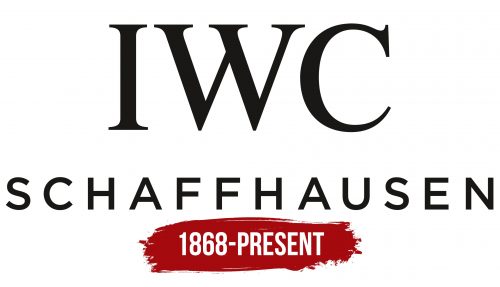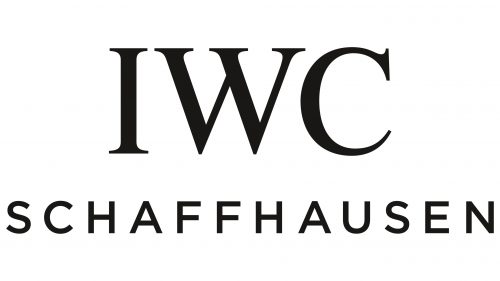The IWC logo is executed strictly and concisely, emphasizing the technical craftsmanship and superior quality inherent to the brand. Its straightforward composition reflects a connection to traditions and respect for its roots, embodying loyalty to Swiss watchmaking heritage. The minimalist design expresses the pursuit of perfection, while refined elements highlight the sophistication and elegance characteristic of the brand. This visual symbol seamlessly aligns with the brand’s philosophy, in which each piece represents precision, craftsmanship, and strict standards. Over the years, the emblem has remained a symbol of reliability and classic style, allowing the brand to maintain its position in watchmaking.
IWC: Brand overview
The history of IWC began in 1868 when American watchmaker and engineer Florentine Ariosto Jones arrived in Switzerland. Jones had an ambitious goal: to combine traditional Swiss watchmaking with advanced American production methods. He established the company in the northern Swiss city of Schaffhausen.
Schaffhausen was not chosen at random. Although far from the traditional centers of Swiss watchmaking, it had a key advantage—a hydroelectric power plant on the Rhine River provided the energy needed for production. This allowed Jones to introduce advanced mechanized production techniques.
In its early years, the company focused on producing high-quality pocket watches. The business quickly gained a reputation for reliability and precision. Special attention was given to designing and manufacturing its calibers, helping it become one of Switzerland’s leading producers of watch movements.
In 1875, financial difficulties forced Jones to step down. Swiss industrialist Johannes Rauschenbach-Vogel took over management, and under his leadership, the company grew and increased production.
The 1880s saw significant technological advancements for the watchmaker. In 1885, the firm introduced the Pallweber, the first pocket watch with a digital time display using rotating discs instead of traditional hands.
At the turn of the 20th century, the company began producing wristwatches. In 1915, it introduced the first wristwatch with two winding wheels, leading to more compact mechanisms.
During the 1930s and 1940s, the brand focused on aviation watches. In 1936, they introduced the “Special Pilot’s Watch” with an anti-magnetic movement, which inspired the iconic Pilot’s Watches collection.
During World War II, the company produced military timepieces, including the famous Mark X for the British Royal Air Force.
The 1950s were notable for several landmark models. In 1950, the brand released the first automatic watch with magnetic protection, the Ingenieur. In 1955, it introduced the first Ingenieur with automatic winding.
A major milestone came in 1967 with the release of the Aquatimer, the company’s first diver’s watch, water-resistant to 200 meters.
Despite the “quartz crisis” of the 1970s, the business continued to innovate with mechanical watches. In 1978, famed designer Gerald Genta introduced the Ingenieur SL.
The 1980s were a period of creativity for the firm. In 1985, they introduced the Da Vinci, featuring a perpetual calendar that could be adjusted via the crown. 1990, the Grande Complication was launched, a highly complex watch with a split-second chronograph, perpetual calendar, and minute repeater.
In 2000, the company introduced the caliber 5000, their first automatic movement with a seven-day power reserve, which became the foundation for many subsequent models.
The watchmaker joined the Richemont Group that year, opening new growth opportunities.
2002, the business revived the Portugieser collection, originally introduced in 1939. The line has since become one of the brand’s most popular.
In 2007, the company refreshed the Da Vinci collection with a new tonneau-shaped case, signaling a shift in its design.
The 2010s were marked by several key anniversaries and innovations. In 2012, the Pilot’s Watches line was updated, and in 2015, the brand celebrated the 75th anniversary of the Portugieser collection.
In 2018, to mark its 150th anniversary, the company released the Tribute to Pallweber Edition “150 Years,” a modern interpretation of the original Pallweber watch.
As of 2023, the business remains one of the leading producers of luxury watches, known for its craftsmanship and innovation. The brand continues to evolve, advancing its core collections like Pilot’s Watches, Portugieser, Ingenieur, and Aquatimer while blending modern technology with its rich heritage.
The company’s history is one of constant pursuit of excellence and innovation. From its humble beginnings in Schaffhausen to becoming a globally recognized brand, the firm has adhered to its founder’s high standards of precision and engineering over 150 years ago.
Meaning and History
What is IWC?
A unique blend of Swiss craftsmanship and American ingenuity distinguishes this Swiss luxury watchmaker. Founded by an American in Switzerland, the company has built a solid reputation for producing complex, high-quality watches focusing on engineering solutions. The brand is known for its pilot watches, which have become iconic in aviation timepieces and collections for sailing, diving, and everyday elegance. Its commitment to in-house movement production has led to innovations such as the Pellaton winding system and a seven-day power reserve. The brand’s design appeals to those who appreciate understated luxury, offering a simple and practical aesthetic with a masculine focus.
1868 – today
The brand’s logo features a two-tier inscription, “IWC Schaffhausen.” The abbreviation IWC originally stood for International Watch Chronology, reflecting the international ambitions of the founder, Florentine Ariosto Jones. At the time, his goal was to open a factory in Switzerland, where watches would be assembled by hand, and the products would be shipped to the United States, a highly ambitious vision. In the 1950s, the meaning changed to International Watch Co.
The logo’s elongated letters symbolize the pursuit of great heights and progress, emphasizing the company’s leadership in the industry. They also reflect the company’s connection to aviation, as the company is known for its pilot’s watches. The second part of the inscription is the name of the town of Schaffhausen in northern Switzerland, where production was founded. The simple yet confident font for “Schaffhausen” creates a sense of stability and strong ties to Swiss watchmaking traditions.
The company is also known for using gold and innovative materials such as titanium, which emphasizes the durability and quality of its products. The solid and sturdy letters of the logo represent the reliability and stability of the brand in the global watch market.





